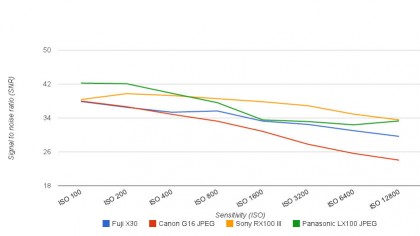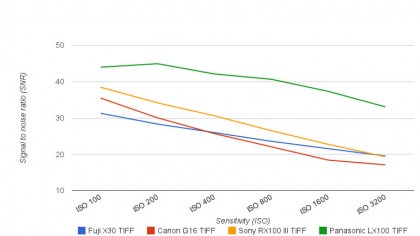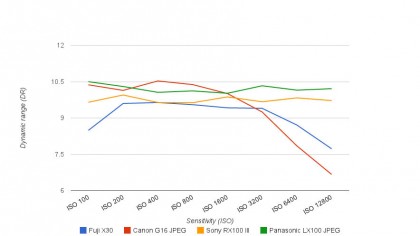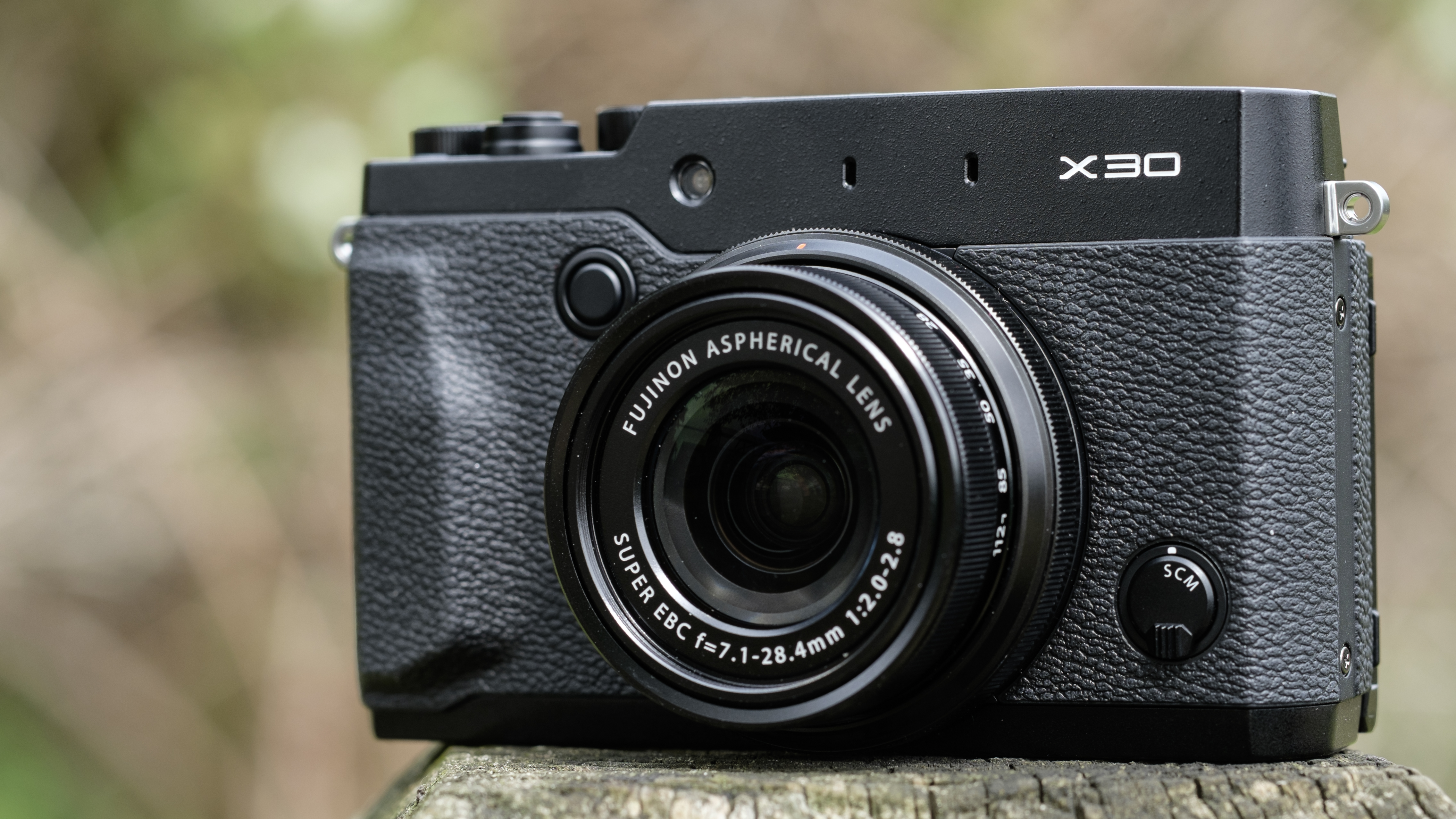Why you can trust TechRadar
We shoot a specially designed chart in carefully controlled conditions and the resulting images are analysed using DXO Analyzer software to generate the data to produce the graphs below.
A high signal to noise ratio (SNR) indicates a cleaner and better quality image.
For more more details on how to interpret our test data, check out our full explanation of our noise and dynamic range tests.
JPEG signal to noise ratio

At the lower sensitivity settings the X30 has a similar signal to noise ratio to the Canon G16, which has a smaller sensor. From about ISO 400 the X30 beats the G16, indicating that it produces cleaner images and draws close to the performance of the Panasonic LX100 which has a Four Thirds type sensor.
Raw (after conversion to TIFF) signal to noise ratio

Again the X30 beats the Canon G16 from about ISO 400 and above, but it lags behind the Sony RX100 III at all but the highest sensitivity setting. The LX100's larger sensor shows its benefit. The raw conversions were all made using the software that's supplied with the cameras. We have found in the past that using Adobe Camera Raw to convert Fuji raw files results in higher scores in comparison with cameras from other manufacturers.
JPEG dynamic range

The X30's dynamic range measured in the lab doesn't compare especially well with the competition here, but images generally have a good level of contrast, especially in the midtones, so they look good straight from the camera.
Raw (after conversion to TIFF) dynamic range

The X30's raw files (after conversion to TIFF) come close to those from the Canon G16 and Sony RX 100 III for most of the sensitivity range. Our real-world tests reveal that the raw files are capable of recording a good range of tones and may benefit from post-capture adjustment.
